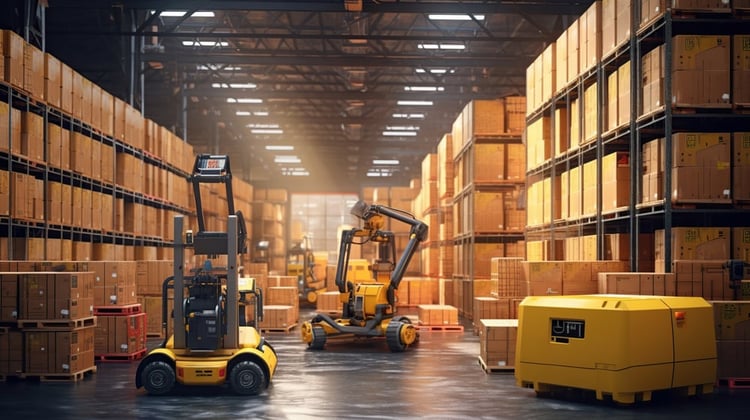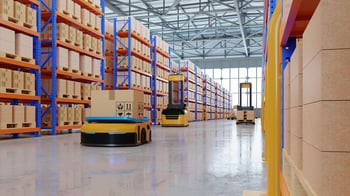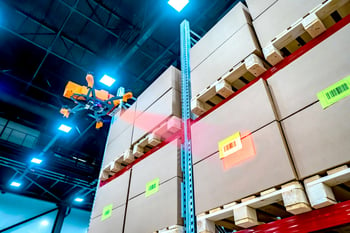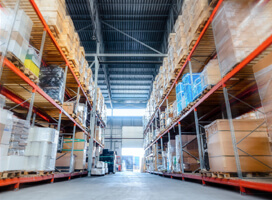
Warehouses have been around for centuries. They’ve provided consistent support for human commerce and innovation. While the structure of a warehouse building hasn’t changed much, everything that goes on inside the building has shifted dramatically.
As eCommerce has evolved, the warehouse itself has experienced a technological revolution. Warehouse owners and stakeholders have invested significant resources in innovating ways to improve warehouse layouts and processes to reduce costs, improve efficiency, and elevate the customer experience.
Today’s warehouses are pretty impressive. They operate much more efficiently than just a few years ago. But where is the industry heading? Here is what you can expect from the warehouse of the future.
Artificial Intelligence & Machine Learning
Artificial intelligence (AI) is a type of advanced technology that can drive advances in warehouse operations. Machine learning uses algorithms to “learn from experience” and make valuable warehouse decisions. For example, it can use sensor data to recommend shorter walking routes, better inventory processes, and faster methods for replenishing inventory. AI and machine learning can improve overall warehouse logistics, make work environments easier and safer for employees, and inject more visibility into the supply chain.
The Internet of Things
The Internet of Things (IoT) is already creating more product warehouses. IoT refers to connected devices using technology like Bluetooth and mobile devices, RFID tags, wearables, and more. IoT fosters better communication and accountability across the supply chain. It can improve forecasting, reduce errors, and improve the experience for both employees and customers.
Automation with Robotics
Bringing robotics into the warehouse isn’t necessarily something new. But the robotic solutions we’ll see in the future will be much more advanced and productive. With so many options, here are just a few examples of how warehouses will continue to automate using robotics:

- Cobots — Collaborative robots are robots that perform repetitive and menial tasks so they can take some of the workload off of humans.
- Automated Storage and Retrieval Systems (AS/RS) — AS/RS robots move inventory between different storage locations inside the warehouse. They work best when integrated with a warehouse management system (WMS).
- Autonomous Mobile Robots (AMRs) — AMRs navigate with the use of pre-programmed sensors. They don’t require any pre-defined route instructions.
- Automated Guided Vehicles (AGVs) — AGVs are designed to transport inventory and supplies within the warehouse. Unlike AMRs, they use software or sensors and require pre-set routes.
On-Demand Warehousing
On-demand warehousing is a fairly new concept. It allows distribution centers and warehouses to use on-demand space and services in a pay-per-use model. Businesses don’t need to sign long-term contracts. Embracing this model means lower set-up costs and fewer risks tied to expansion or peak season demand. Businesses have the freedom to choose which and the volume of services they will need.
Mobile Devices
 Mobile devices, such as tablets and smartphones, offer logistics partners and warehouse workers a wide range of resources and tools, such as RFID and barcode scanning. They also give workers the ability to track items in real-time and generate custom reports in seconds.
Mobile devices, such as tablets and smartphones, offer logistics partners and warehouse workers a wide range of resources and tools, such as RFID and barcode scanning. They also give workers the ability to track items in real-time and generate custom reports in seconds.
The use of mobile workstations in warehouses is sure to become commonplace in the warehouse of the future. These solutions reduce repetitive walking and free up time for workers to become more productive in picking and inventory management tasks.
3D Printing
The 3D printing market is expected to be valued at $94 billion by 2030. Many manufacturers have begun stockpiling raw materials, which could sit on warehouse shelves for years until they are needed. With 3D printing, those storage costs can be reduced or eliminated. Many manufacturers are still exploring the use of 3D printing.
Another use of this technology in warehouses is for spare parts. For example, if a piece of machinery breaks or requires maintenance, the business can 3D-print the parts immediately instead of waiting for them to arrive from an exterior source.
Smart Warehousing
The warehouse of the future will be much “smarter.” What does this mean? Many of the primary warehouse functions (sorting, storing, picking, packing, shipping, etc.) will be streamlined and connected. Workers and robots will be able to identify the correct items quickly using advanced systems like pick-to-light, voice-enabled headsets, and smart glasses. These will allow warehouses to reduce operational costs and improve overall results.
Digital Twins
Digital twins are virtual replicas of systems or physical objects. They aren’t being used much today, but they have enormous potential. For warehouses, digital twins can be used to test new robotics and automation equipment before purchase, installation, or launch so it doesn’t impact operations. The technology can also be used to test different approaches to existing supply chain and warehouse processes.
Drones
 Drones will likely play a significant role in the warehouse of the future. Drones inside a warehouse can record and relay RFID tag data en masse. These lightweight drones can also fly through a warehouse to inspect shelves and determine if there are any safety or maintenance issues that need addressing.
Drones will likely play a significant role in the warehouse of the future. Drones inside a warehouse can record and relay RFID tag data en masse. These lightweight drones can also fly through a warehouse to inspect shelves and determine if there are any safety or maintenance issues that need addressing.
Advanced Analytics
Accurate and real-time data is vital to building strong and sustainable businesses. Advanced analytics, such as predictive analytics, can improve forecasting and allow business owners to make more informed decisions. Some of the specific uses for advanced analytics include:
- Smarter inventory planning
- Accurate demand forecasting
- Better supply chain risk reduction
- Fast optimization of storage, picking, and more
Advanced analytics can also provide warehouses with more user-friendly data, such as meaningful and visually-appealing data that makes it easier to understand complex concepts.
Warehouses are a vital part of the supply chain. They will continue to play a critical role in the overall logistics process. But this is also a highly traditional industry. Fortunately, things are changing fast. As warehouses adopt many of these new technologies and processes, we can expect to see even more supply chain visibility, cost savings, and efficiency in the coming years.












